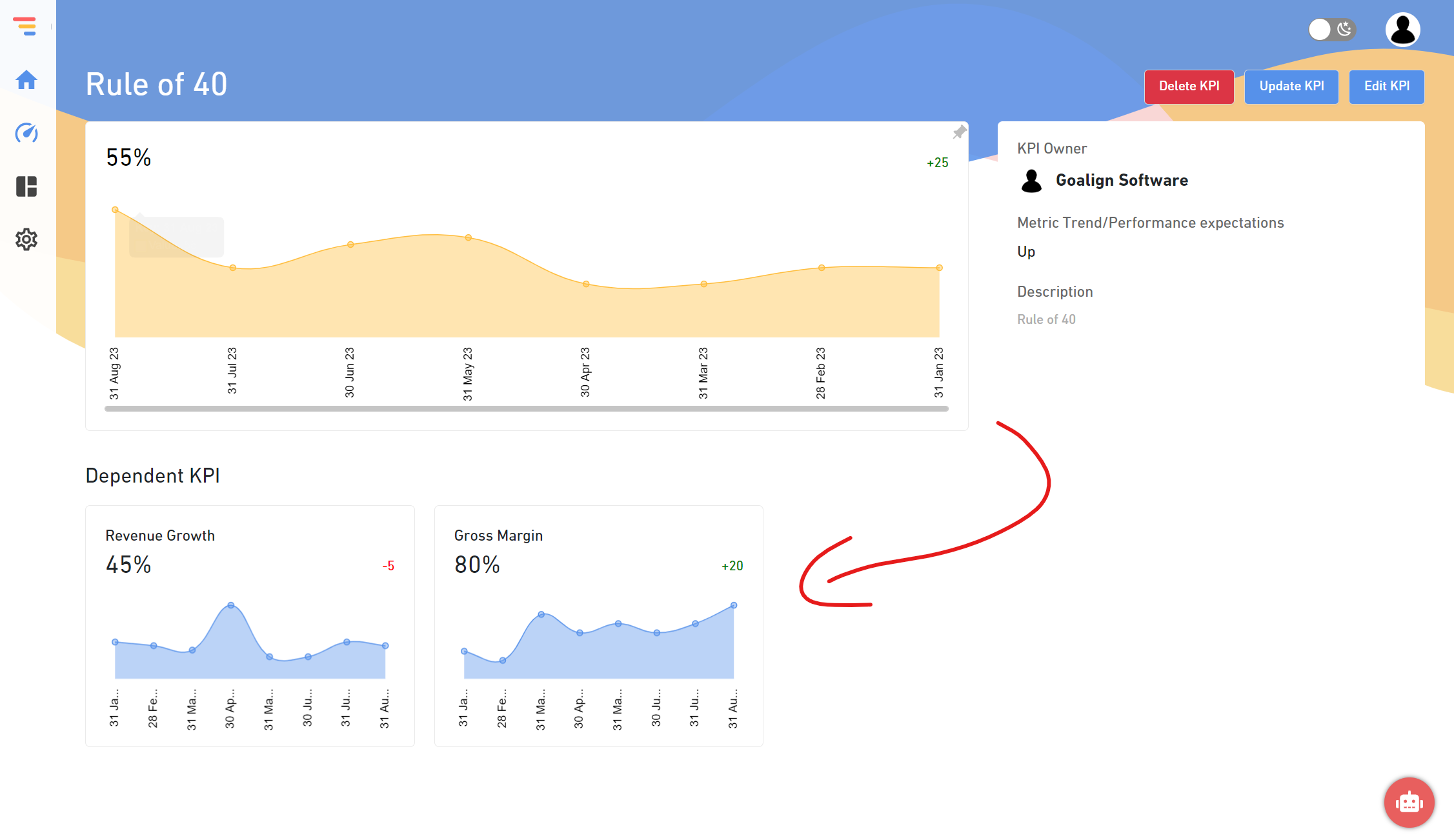Data serves as the cornerstone for the success of high-performing sales teams. The good news is that sales executives have more than enough data easily accessible in their customer relationship management (CRM), enterprise resource planning (ERP), and other tools to improve sales, optimize profit, develop the sales force, or beat the competition. The objective for sales teams is to discover the most critical data points and key performance indicators (KPIs), understand the results, and then take action to meet or exceed sales targets. Well-defined sales KPIs are an efficient approach to do this.
What Are Sales Key Performance Indicators?
Sales KPIs convert raw data into essential business measures that are used to compare an individual’s, department’s, or firm’s actions to their objectives and assess the effectiveness of their efforts. For example, KPIs might be connected to financial data, deals, or individual or team development. Sales KPIs are used by businesses to monitor and enhance sales team performance, optimize the sales cycle, and increase sales income.
How to Select the Best KPIs
Choosing the appropriate sales and KPIs is crucial to meeting sales and company objectives. Specific, quantifiable, realistic, relevant, and timely KPIs are the most successful (SMART). Less is often more: A sales team may focus on its significant objectives by picking the most influential sales KPIs. After you’ve decided on your KPIs, customer relationship management (CRM) software may assist you in creating dashboards to track your selected metrics. The dashboards provide the KPIs in an easy-to-understand and visually attractive fashion so your team can monitor progress toward targets and receive at-a-glance views of real-time sales data.
Why Are Sales KPIs So Vital?
Sales teams and executives use sales KPIs to measure their progress toward targets. With sales KPIs, salespeople and managers may be sure if their efforts yield the expected results or whether the team should alter course. KPIs are also used to monitor developing trends and topics.
Based on the KPI, sales executives may go further to find root causes and solutions. For example, if a new product is selling better than projected, more resources might be reallocated to concentrate on marketing it. On the other hand, if a product is underperforming owing to competitive pricing pressure, the sales team may reduce prices or transfer sales efforts to another product.
Sales KPIs also provide insight into an individual’s and team’s actions and performance, allowing managers to determine if team members, often dispersed across many areas, are optimizing their efforts to meet their objectives. Close and continuous monitoring of sales KPIs provides management with a clear picture of where the firm is headed.
In sales, what does KPI stand for?
The acronym KPI stands for a critical performance indicator. KPIs in sales may take many different shapes to track certain operations. Therefore, sales managers, salespeople, and marketers must monitor sales KPIs.
To save you time, we’ve compiled a list of regularly used KPIs, including those we feel are most helpful in managing field sales teams.
1. Price Comparison
While managers and company owners should refrain from following rivals’ every move, understanding their pricing might help them develop a competitive strategy. If your prices don’t vary much, you might explore a price-matching plan to ensure your clients get the best deal — and you get the most sales.
Furthermore, by tracking the average retail price of your items, you may assess the effect of lowering your pricing or conducting a promotion.
2. Locational Sales Volume
You can identify where demand for your product is strongest and lowest by comparing sales volumes across places, including physical shops and online transactions. Then, you may deduce why from there.
If area A has a high sales volume, there may be a more significant demand, so you might concentrate on designing specific goods and services for that region. If you want to compare figures across actual shops, use A/B testing.
3. Current Client Engagement
Maintaining a positive relationship with consumers after the transaction is critical to ensuring a long-term business. In addition, salespeople may create trust and keep clients pleased by checking in with them regularly to see how things are going and how they can assist.
Customers know they’ll always have someone to assist their company requirements when salespeople are regularly accessible to help.
Keeping in contact with customers benefits your company’s commercial picture and strategic objectives – it’s a sales measure that counts.
4. Rates of Upsell and Cross-Sell
Who are your CRM’s most qualified leads? Your current customers. Track your salespeople’s upsell and cross-sell figures and utilize that information to determine if particular verticals react well to specific product or service presentations.
For example, suppose salespeople had success selling Feature X to customers who have Product Package Y six months into their career with you. In that case, this may be a desirable milestone to include in your sales process.
5. Employee Contentment
Are you ready for some grim news? According to a 2020 poll conducted by Emplify, 75% of workers are interested in their jobs. Furthermore, just 18% of workers may be held accountable for thousands of dollars in missed productivity.
Working in sales involves perseverance, and reps might sometimes run out of steam. One of your most challenging problems will be to ensure that your sales representatives are motivated and like their jobs. How do you keep your sales team in sync when you have a distributed workforce? Do they believe they are a member of a team? Do they agree with the sales strategies you’ve put in place?
Employee input is critical to establishing a thriving sales culture. KPIs are used to assess not just your team members’ performance but also your manager’s performance. Because employee happiness may be difficult to measure, try utilizing an NPS survey, combined with a few qualifying questions, to learn what makes them happy or dissatisfied and then compare the findings to your objective.
6. The Close Ratio
Close ratio assesses how well a salesman or team closes transactions based on the leads they generate. This indicator, when combined with system touches, assists in quantifying the efficacy of your sales team’s outreach approach. The close ratio is derived by dividing the number of actual concluded transactions by the number of lead opportunities the salesperson has during a specific time.
7. Length of the Sales Cycle
Similarly, it is critical to consider the average duration of your team’s sales cycle. Is it true that some reps close in three weeks while others close in six? What are the turnover rates six months after onboarding? Examine which sales cycle duration provides the most closed-won business. Remember to consider how successful such transactions will be in the long run.
Suppose you have a sales professional closing business quickly, but their clients are unsatisfied with your product and often churn after nine months. In that case, a lengthier sales cycle may result in a healthier company.
Once you have data on your KPIs, evaluate it to determine why you received those outcomes. Then, identify how you can increase performance and take action. Remember that, as essential as creating KPIs is, they must always be linked to an ultimate purpose.
Conclusion
Once you have data on your KPIs, evaluate it to determine why you received those outcomes. Then, identify how you can increase performance and take action. Remember that, as essential as creating KPIs is, they must always be linked to an ultimate purpose.





